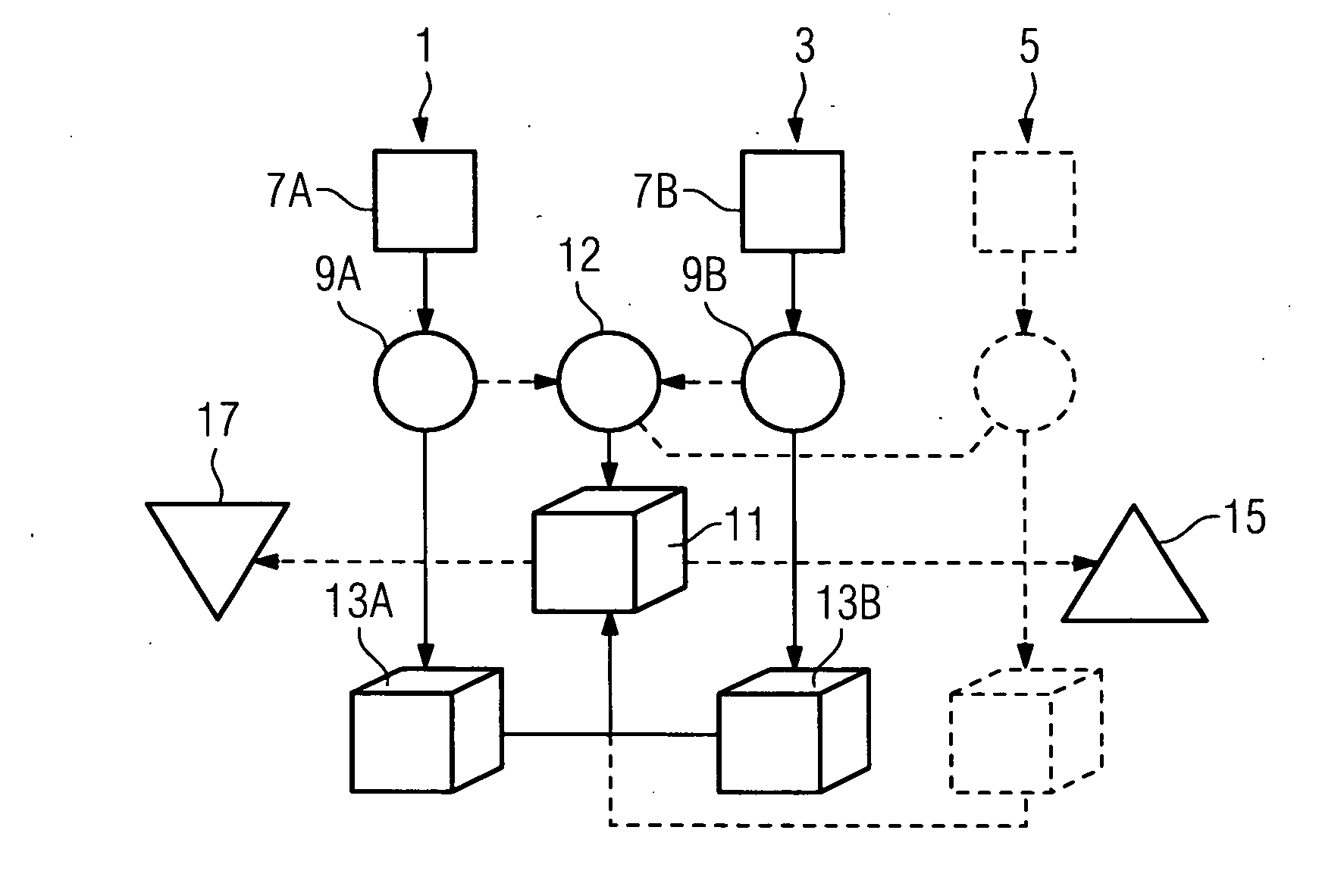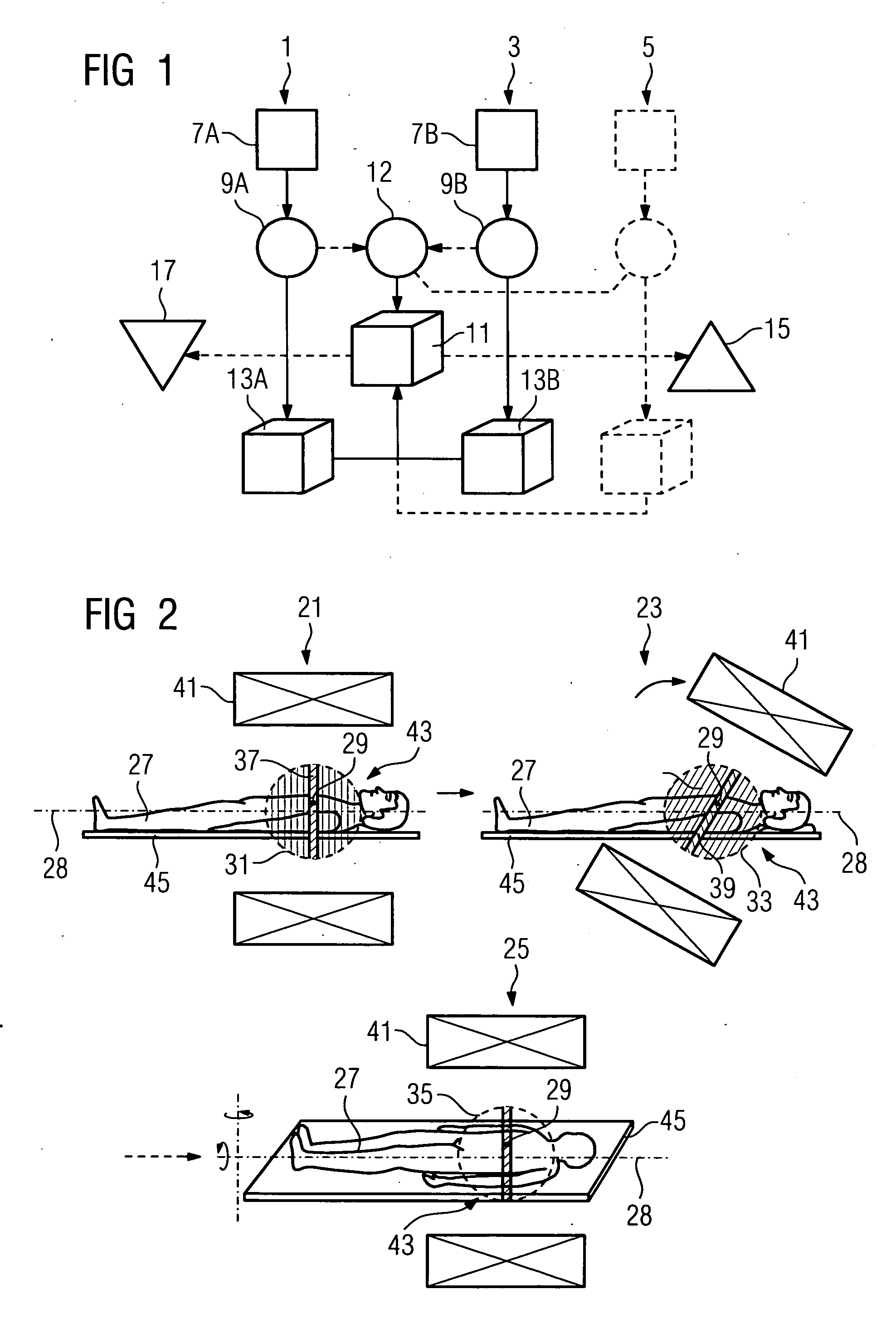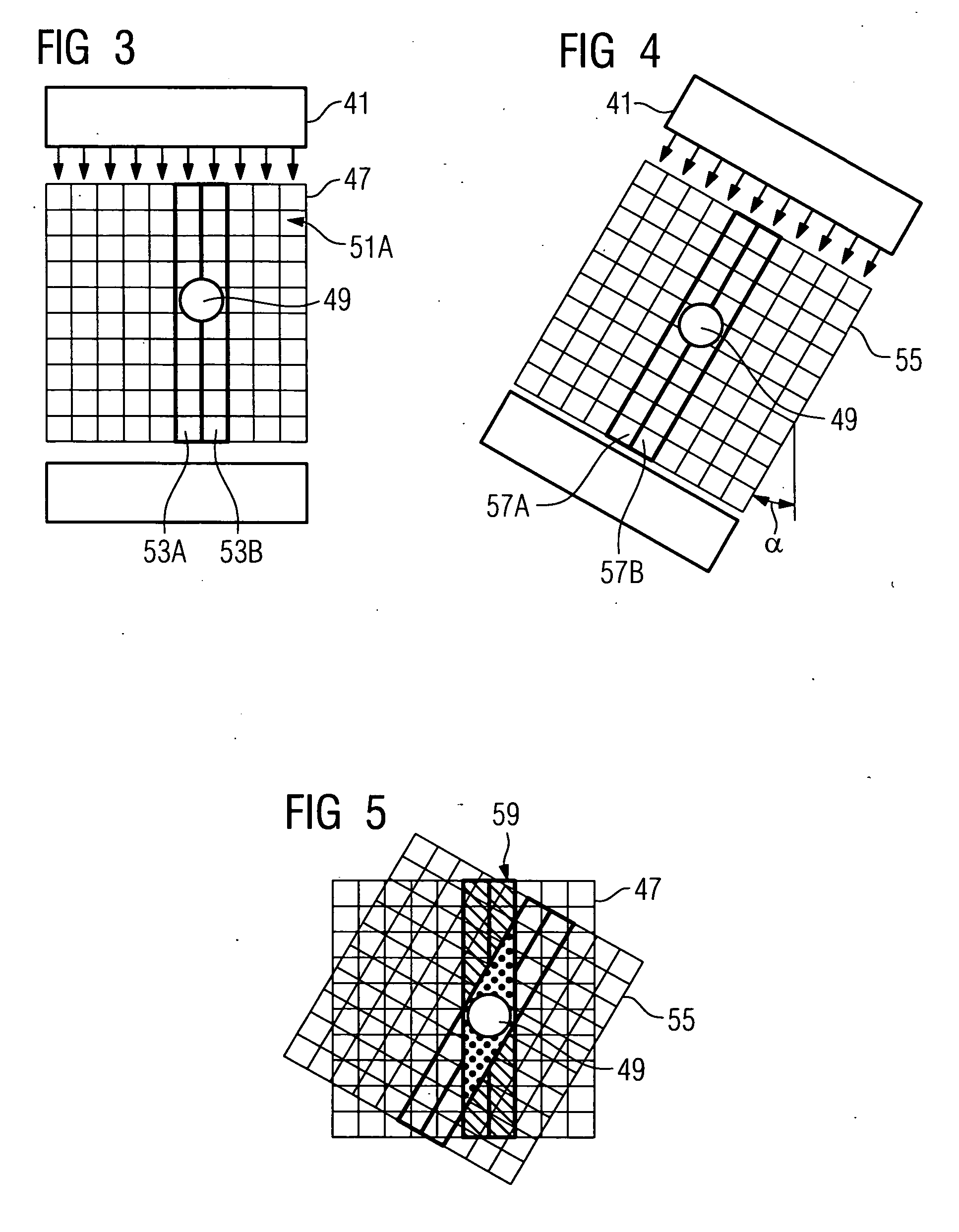Method for reduced-artifact radiological 3D imaging, medical imaging device and method for creating a therapy plan
- Summary
- Abstract
- Description
- Claims
- Application Information
AI Technical Summary
Benefits of technology
Problems solved by technology
Method used
Image
Examples
Embodiment Construction
[0020]FIG. 1 shows a typical schematic flow diagram to illustrate the procedure for generating reduced-artifact image data. The method is illustrated on the basis of two imaging procedures 1 and 3, in which case further imaging procedures 5 (as shown by dashed lines) can also be included. Each of the imaging procedures 1,3, 5 begins with a positioning process in which a patient is positioned in a first imaging position 7A or a second imaging position 7B within an imaging device (for an illustration see FIG. 2 with associated description). 3D-imaging is performed in each of the imaging positions 7A, 7B in which a set of radiographic layers are radiographically examined in each case with a radiographic source and are recorded positionally-resolved by a radiation detector. This creates a first raw data record 9A or a second raw data record 9B and this is prepared for further processing. The decisive point is now that the imaging positions 7A and 7B differ from each other in their geome...
PUM
 Login to View More
Login to View More Abstract
Description
Claims
Application Information
 Login to View More
Login to View More - R&D
- Intellectual Property
- Life Sciences
- Materials
- Tech Scout
- Unparalleled Data Quality
- Higher Quality Content
- 60% Fewer Hallucinations
Browse by: Latest US Patents, China's latest patents, Technical Efficacy Thesaurus, Application Domain, Technology Topic, Popular Technical Reports.
© 2025 PatSnap. All rights reserved.Legal|Privacy policy|Modern Slavery Act Transparency Statement|Sitemap|About US| Contact US: help@patsnap.com



